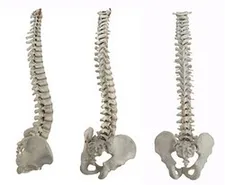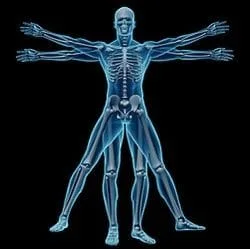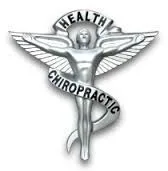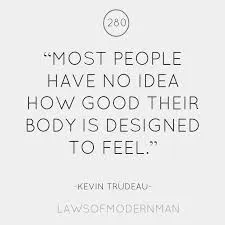
What is Chiropractic?
Taking A Natural Systemic Approach To Healing
Chiropractic is an overall way of looking at the human body. It's based on the idea that the body is self-sustaining and self-healing. The body is in essence completely controlled by the brain through its connection via the spinal cord and the vast networks of nerves that make up the body. When this system is not functioning at its peak, the overall performance of the human body is lacking.
In the chiropractic world, drugs and medicine are not utilized as a form of treating a patient. While supplementation and nutrition are almost always a part of the bigger picture, drugs and prescriptions can be viewed as band-aids to treat symptoms rather than going to the source and treating the real problem.
While it's often perceived that the chiropractor is solely here to treat back and neck pain, this is simply a small piece of what the profession really is capable of handling. Chiropractors not only treat soft and hard tissue problems such as sciatica and joint pain, but are largely called on to deal with more significant issues.
History


Did you know that chiropractic dates back to the time of Hippocrates? He believed that if the spine was misaligned, it greatly contributed to the health of an individual.
The modern day school of chiropractic dates back to 1895, when Dr. Daniel Palmer adjusted a man that had lost his hearing 17 years prior. The story goes that prior to losing his hearing the man had heard something pop in his back. Upon the adjustment of the man's misaligned vertebrae his hearing greatly improved.
While the medical community criticized this new technique for healing the body, the people who followed in these footsteps found an amazing new way of dealing with illness and disease. Dr. Palmer's theories are still discussed in the chiropractic industry today. Without this man's input into medicine in a time where he was greatly discredited, the millions of people today who enjoy the life changing benefits may never have had this opportunity. There is still a school named after Dr. Daniel Palmer as well as over 20 schools and thousands of chiropractic students across the country.
How It Works?

How does it work?
Chiropractic is based on the idea of removing imbalances both structural and postural in an effort to allow our body to heal itself. For this to happen the network of nerves and signals from your brain, down your spinal cord, to the network of nerves must be allowed to flow freely without any interruption. Chiropractors have the ability and skill to remove these interruptions or misalignments and allow the body to perform as it was meant to.
If you've ever been in a car accident, played a sport, fell down or just bumped into something too hard, it's very possible that you are not functioning at your best due to a misalignment. While there are many potential mechanical or structural causes for misalignment, there are also chemical reasons. For instance, if you smoke or drink excessively or even just have a poor diet, the chemical issues in your body can eventually cause underlying conditions and disease to appear.
Allowing a chiropractor to get you back on track both chemically and structurally will bring your body back to the proper state it should be in to perform at it's peak.
What is a Segmental Dysfunction?

When a vertebrae becomes misaligned or moves out of its normal position, this is referred to in the chiropractic profession as a restriction or intersegmental joint dysfunction. Segmental Dysfunction can be caused by a wide range of issues ranging from a minor slip or bump to a car accident or any sudden trauma. When a vertebrae is restricted, it begins to put pressure on nerves, blood vessels and everything around it. This pressure comes with a price, interrupting the natural pathways that the messages sent from the brain need to be clear in order to be completed properly.
As time goes by and segmental dysfunction remains untreated, the spine and surrounding features such as discs can begin to degenerate. This degeneration becomes more difficult to reverse as time goes by as the surrounding muscles, nerves and bones begin to adjust to the new shape. The body is an amazing machine. It will start to accommodate these changes by compensating in other areas. The longer this goes on, the more difficult it is and the longer it takes to get back to near perfect position.
Spinal Degeneration

Degeneration Phase 1
The first stage of spinal degeneration is when there is a minor loss of normal spine balance and spinal curvature. The surrounding features of the spine such as nerves, discs and joints begin to age quicker and are continually more stressed. This stage of the degeneration process rarely is accompanied with any major pain. At this point, there is a good chance that with the proper care, you can return to normal.
Degeneration Phase 2
In the second stage of spinal degeneration, there is a often narrowing of the discs and potentially deformation in the bones. Your posture is often beginning to degenerate as well at this point. As the spinal canal, or opening begins to narrow, there are often significant aches and pains associated. Fatigue and stress are more common at this stage. There is a good chance of improvement at this stage with the proper care.
Degeneration Phase 3
In the third stage of spinal degeneration, there is significant physical and mental involvement due to the level of issues here. There is most likely nerve damage as well as deformation of the bones and discs. There would be a significant loss of energy and height at this point. Some reversal is possible.
Degeneration Phase 4
In the fourth stage of spinal degeneration, most damage is permanent including scar tissue, nerve damage and deformation. At this point, the condition is irreversible. Management of pain and discomfort is the best option here.
